

New York City is home to some of the most beautiful post offices in America (in our humble opinion). The embattled United States Postal Service operates hundreds of post offices across the five boroughs, from small mundane neighborhood outposts to grand buildings of distinguished architectural design. Inside some of these post offices, the country’s most talented painters created murals and sculptures.
In every financial crisis, the USPS re-emerges in the national dialogue. Is the post office a service, as stated in its name, or should it managed like a for-profit business? Those that support the latter favor the privatization of the postal service, which they argue will lower cost and increase efficiency. On the flip side, those that contend the USPS should be a service point out the many rural places where USPS continues to deliver where companies like FedEx and UPS do not. Our own visit to the smallest post office in America in Ochopee, Florida shows that even the smallest outpost services more people than it looks, truly providing an essential service.
Controversy over the United States Postal Service in 2020 around political concerns about mail-in voting, focused on actions taken by the Postmaster General DeJoy that resulted in the removal of sorting machines and mail collection boxes on streets. DeJoy’s proposal to freeze hiring and force early retirement put a question mark on the historical role the post office has served in offering Americans a rung into the middle class.
Financial crises don’t always result in the cutting of services, however. We should also remember that thousands of post offices around the country were constructed as part of federal relief efforts during the Great Depression, putting to work builders, craftsmen, and artists. Dozens of post offices in New York City were built as part of the Franklin Delano Roosevelt’s New Deal, and these notable buildings still stand today more or less providing their original function. Here are 10 beautiful post offices in New York City built from 1885 through the 1930s.
1. James A. Farley Post Office
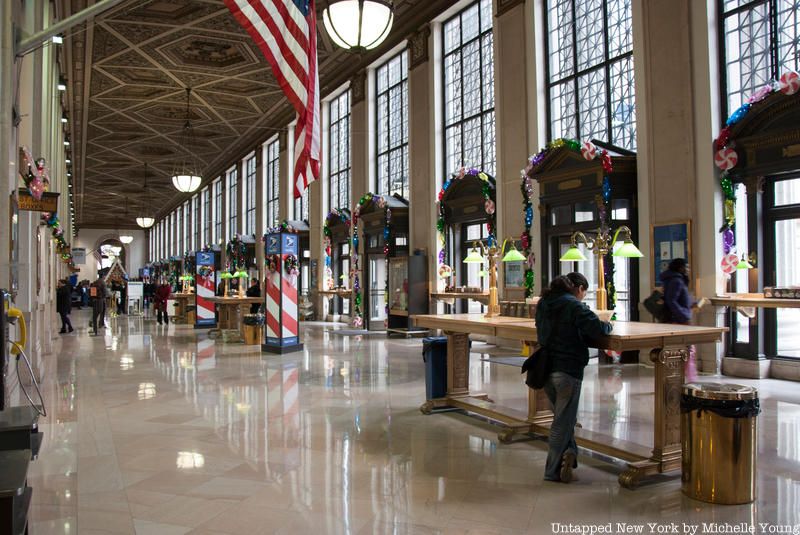
The James A. Farley Building is New York City’s main USPS building, located in Midtown. In the early 1900s, the Pennsylvania Railroad proposed that the United States Post Office Department construct a post office across from the train station on 8th Avenue. The original structure began construction in March 1911. McKim, Mead, and White designed the Beaux-Arts-style building, which features a detailed Corinthian colonnade underneath the inscription: “Neither snow nor rain nor heat nor gloom of night stays these couriers from the swift completion of their appointed rounds.” The quote was adopted from Herodotus describing the couriers of King Xerxes, along with inscriptions of names related to postal history like Cardinal Richelieu and King Louis XVI.
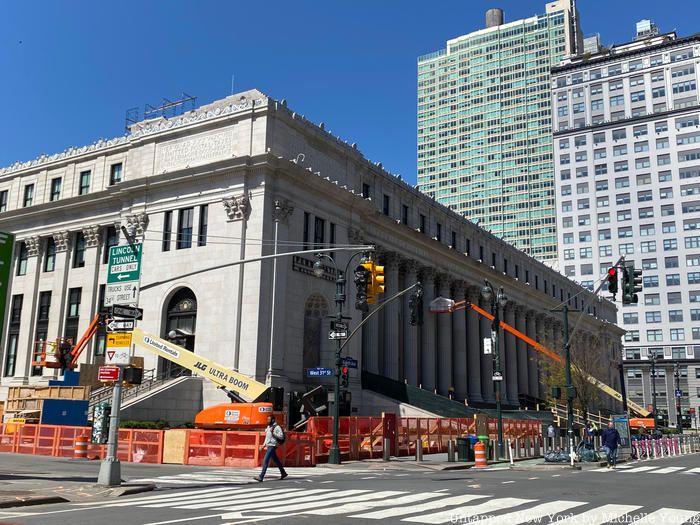
The ceiling of the front reception hall is decorated with carved national emblems or coats of arms of the United States, the United Kingdom, the German Empire, the French Third Republic, the Russian Empire, the Kingdom of Italy, the Kingdom of Spain, Belgium, Austria-Hungary, and the Netherlands. In the 1930s, Louis Lozowick, a Russian painter and art critic, painted two large oil painting in the lobby of the post office, and Triborough Bridge and Lower Manhattan can still be viewed today. The post office also features secrets like a number of abandoned spaces, remnants of a WPA mural, a secret postal tunnel, and a Postal Museum.
The building was designated a New York City landmark in 1966. Portions of the building have been converted into the Moynihan Train Hall for Amtrak and the Long Island Railroad. In 2020, Facebook signed a lease for all 730,000 square feet of office space in the Farley Building. The USPS will keep postal services despite the redevelopment of the James. A. Farley building.
2. Cadman Plaza Post Office
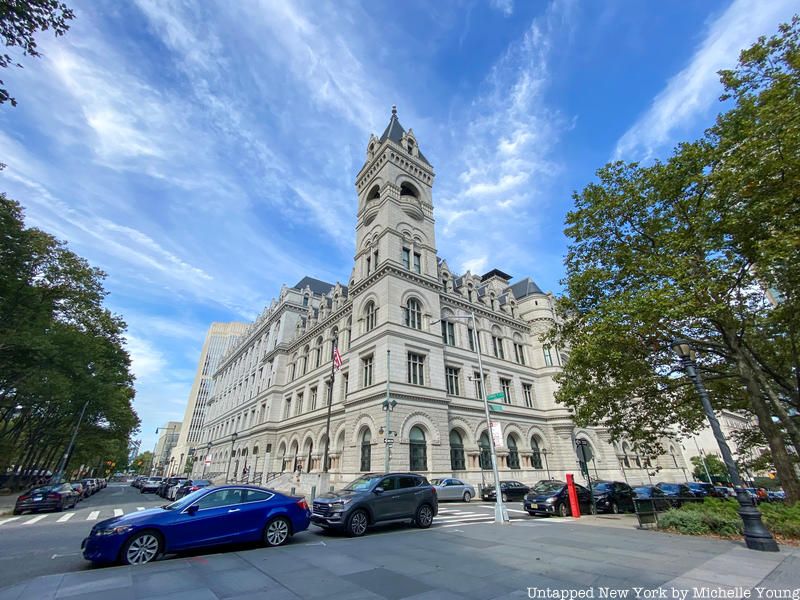
The Federal Building and Post Office is a historic post office, courthouse, and Federal office building in Brooklyn that originally housed the Brooklyn General Post Office. The building is located at Cadman Plaza and was designed in the Romanesque Revival style beginning in 1885. Mifflin E. Bell, supervising architect of the U.S. Treasury Department, designed the building with iron roof cresting, steeply pitched roofs, and rounded arches.
The building is known for its interior atrium, enclosed by a loggia, as well as its square tower. The building’s postal floor had to cover its skylight and laylight to comply with black-out laws during World War II. The post office was named a New York City Landmark in 1966 and was added to the National Register for Historic Places in 1974.
3. Lenox Hill Station
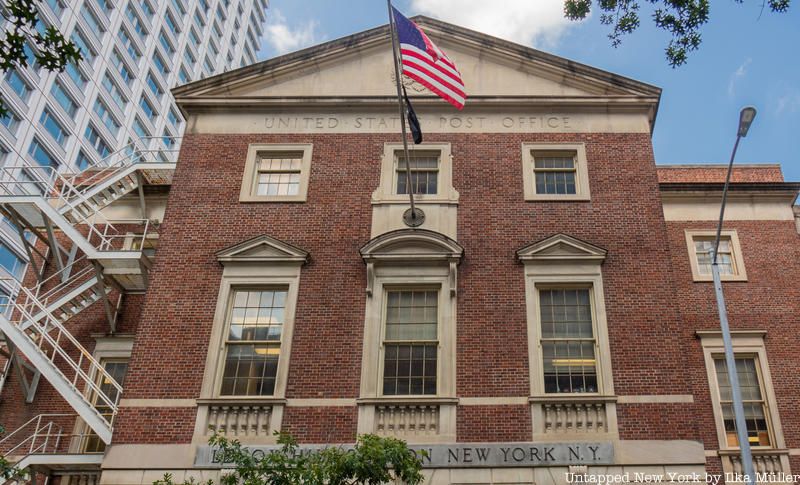
The Lenox Hill Station post office is located at 217 East 70th Street in Manhattan’s Lenox Hill neighborhood of the Upper East Side. Built in the Colonial Revival style, the post office was constructed in 1935 by Eric Kebbon, who is credited with creating at least six post office buildings. The post office consists of two three-story sections and features a rusticated limestone face on a granite foundation. The building also includes tripartite round-arched windows as well as rectangular sash windows.
The Lenox Hill Station post office was one of 12 post offices built in Manhattan as part of federal relief efforts during the Great Depression, but unlike most of them, Kebbon had complete freedom in designing Lenox Hill Station, serving one of Manhattan’s wealthiest areas. The post office was added to the National Register of Historic Places in 1989.
4. Bronx Central Annex
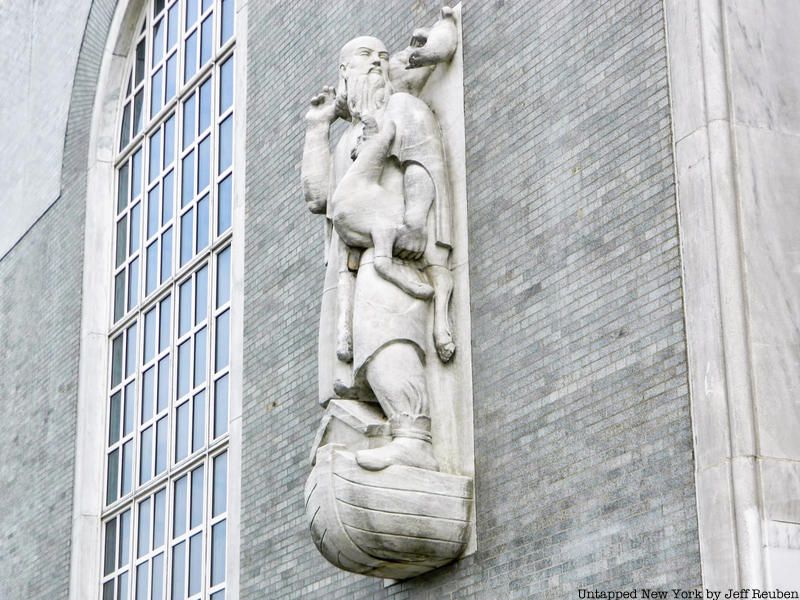
The Bronx Central Annex, previously known as the Bronx General Post Office, is a historic post office at 558 Grand Concourse in the Bronx. The four-story building was constructed between 1935 to 1937 and was designed by consulting architect Thomas Harlan Ellett. The building was constructed of smooth gray brick and features a granite terrace and marble arches. Named a New York City Landmark in 1975, the Bronx Central Annex was purchased by real estate developer YoungWoo & Associates in 2014 and now includes postal services, retail space, office space, and a rooftop restaurant.
Inside, the Bronx Central Annex building features thirteen murals by Ben Shahn and Bernarda Bryson Shahn entitled “Resources of America,” inspired by Walt Whitman’s poem I Hear America Singing. The murals include a celebration of the American textile industry and Whitman’s address to American workers and their families. On the terrace are two sculptures dating to 1936, The Letter by Henry Kreis and Noah by Charles Rudy.
5. Flushing Post Office
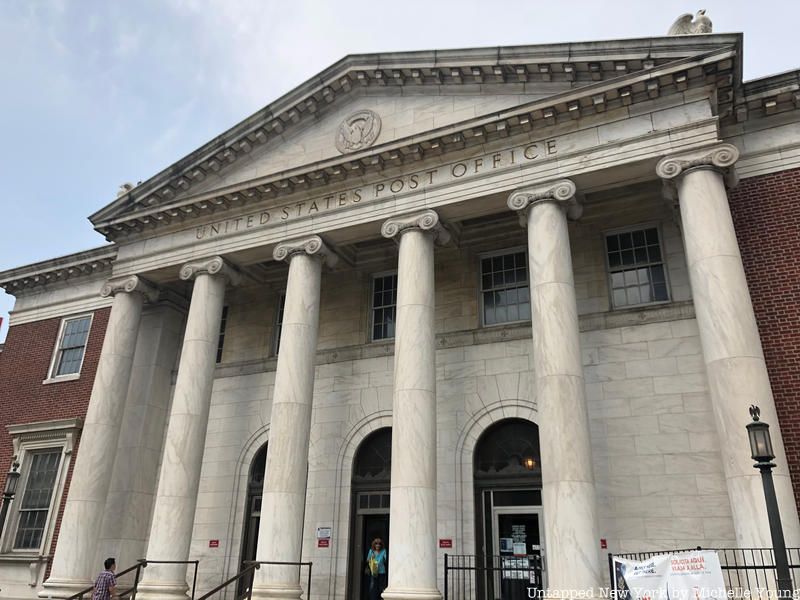
The historic Flushing post office in Flushing, Queens, was built between 1932 and 1934 in the Colonial Revival style, located at 4165 Main Street. It was designed by architects Dwight James Baum and William W. Knowles and is a two-story steel frame buliding clad in red brick with marble trim. Its entrance portico consists of six Ionic columns and is symmetrically massed.
The interior of the building is graced by a series of murals by Vincent Aderente depicting the twelve communities served by the post office. Aderente’s work can also be seen at the Waldorf-Astoria, Queens County Court House, Kings County Hospital, and the Long Island Savings Bank.
6. Canal Street Station
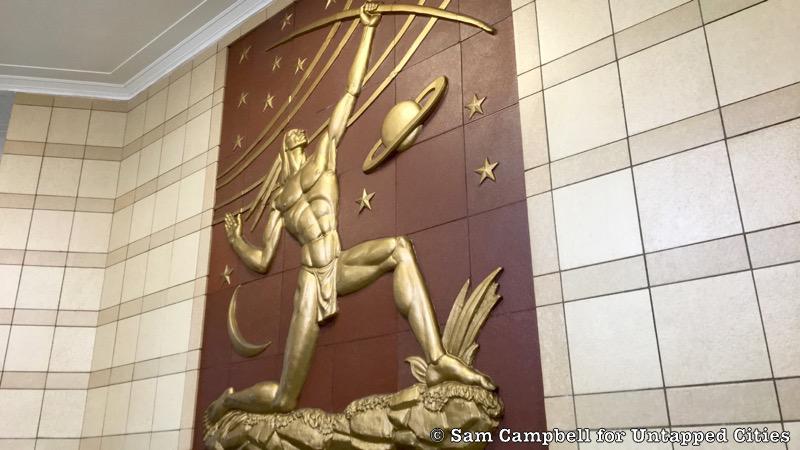
The Canal Street Station post office is located at 350 Canal Street in Manhattan’s Tribeca neighborhood. The building is made of terra cotta panels in the Moderne style and features a terra cotta frieze with a tarnished silver finish. Built in 1937, the post office was designed by Alan Balch Mills for the Office of the Supervising Architect.
The building contains an outstanding Art Deco bas relief designed by Wheeler Williams and installed in 1938, depicting a Native American in a majestic pose with his bow aimed towards the heavens surrounded by the stars, the Moon, and Saturn. The building was added to the National Register for Historic Places in 1989 and remains one of Manhattan’s busiest post offices.
7. Knickerbocker Station
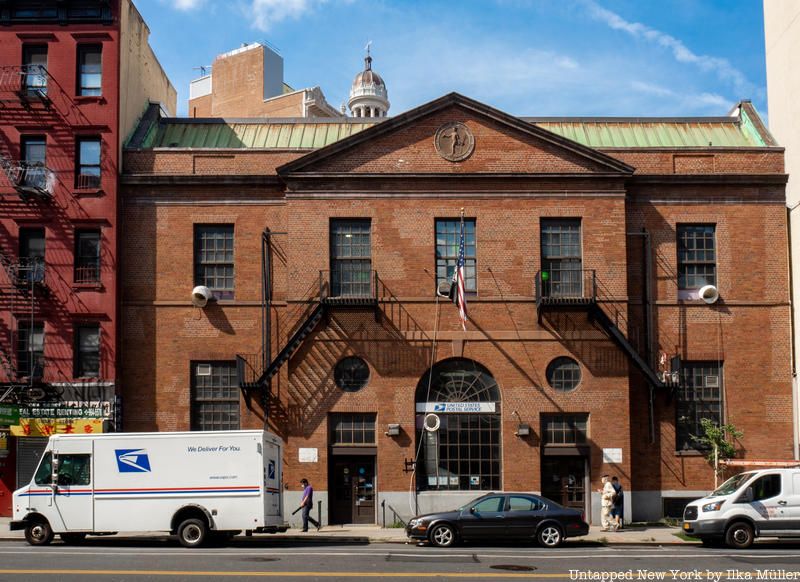
The Knickerbocker Station post office is a historic post office at 128 East Broadway around Manhattan’s Chinatown. The building was one of twelve post offices built in mid-1930s Manhattan as part of federal relief efforts during the ongoing Great Depression. Knickerbocker Station was designed by William Dewey Foster, who helped increase the workload of New Deal projects while working with the Office of the Supervising Architect.
The Colonial Revival-style building was constructed out of brick and includes a mansard roof and granite trim. Knickerbocker Station also features black window frames and a circular emblem above the second floor windows.
8. Kensington Post Office
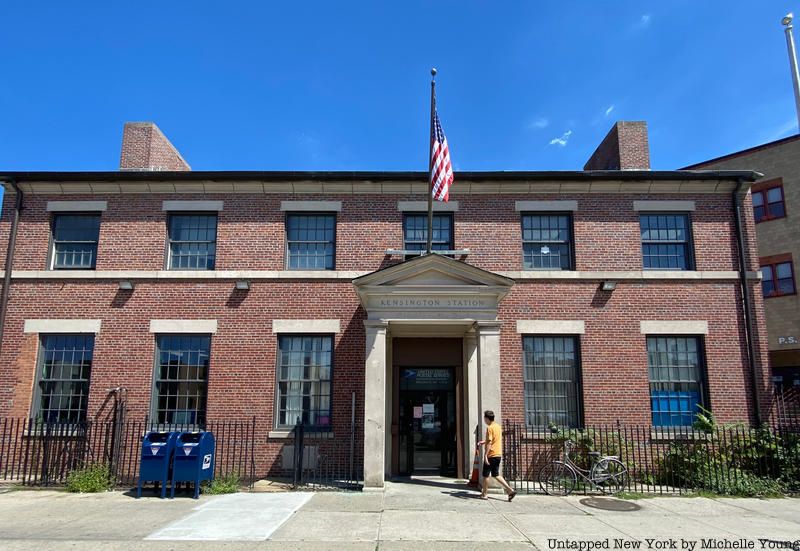
The Kensington post office is a historic post office in Brooklyn’s Kensington neighborhood at 419 Macdonald Avenue. Built in 1935 in the Colonial Revival style, the Kensington post office was built by the Office of the Supervising Architect with architect Lorimer Rich designing the two-story Federal-style brick building.
Rich is known for collaborating with sculptor Thomas Hudson Jones on the winning entry in the nationwide competition to create a design for Arlington National Cemetery’s Tomb of the Unknown Soldier. The post office was painted white for much of its history, and it features a portico supported by Doric piers. The post office was added to the National Register of Historic Places in 1988.
9. Forest Hills Post Office
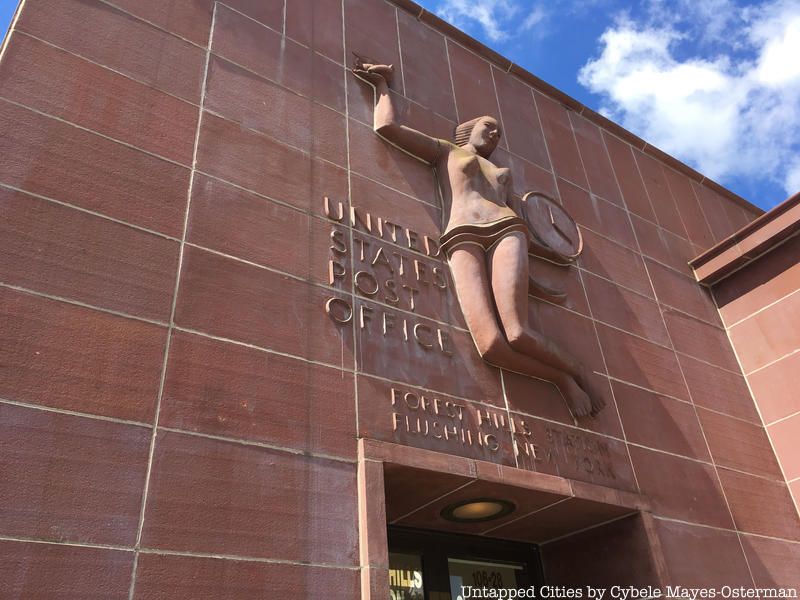
The historic Forest Hills post office at 10628 Queens Boulevard in Forest Hills, Queens, is another of architect Lorimer Rich’s designs, built in 1937. The Art-Deco style post office is a one-story flat-roofed building clad with terra cotta, constructed in the International Style. It is notably adorned with a 1938 relief sculpture by Sten Jacobson entitled “The Spirit of Communication,” created under the federal Treasury Department Section of Fine Arts program.
The post office was added to the National Register of Historic Places in 1988, yet the building has not been designated a landmark by the City’s Landmarks Preservation Commission.
10. Long Island City Post Office
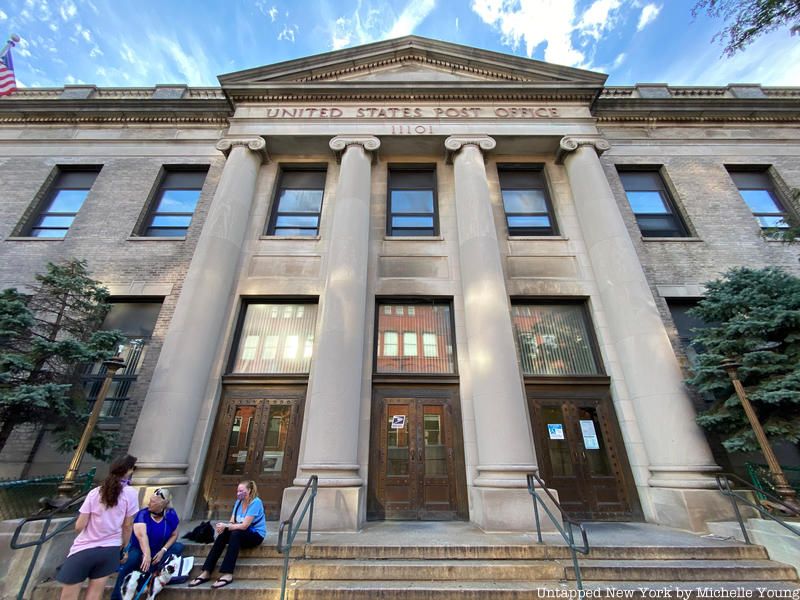
The Long Island City post office at 4602 21St Street is a historic post office in Long Island City, Queens, that was built in 1928 in the Colonial Revival style. The post office was one of several designed by lawyer and administrator James A. Wetmore, Acting Supervising Architect of the U.S. Office of the Supervising Architect. Strangely, despite his role, Wetmore was not a professional architect, and he did not design many of the federal buildings that bear his name.
The structure is a two-story, symmetrical brick building with limestone trim, and it features four limestone Ionic columns at its frontispiece. It was added to the National Register of Historic Places in 1989.
Next, check out The Appraisers Store Post Office, The Most Secretive Post Office in NYC!

